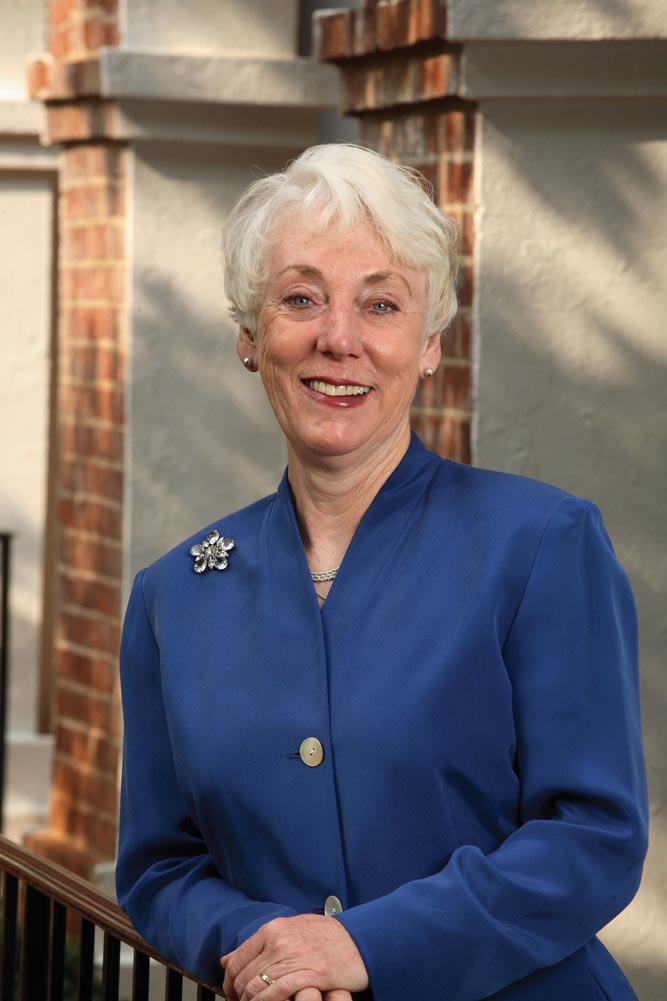A Career in Caring
After guiding Nursing School to prominence, Lancaster takes on one more challenge

Jeanette Lancaster won’t exactly be a stranger in a strange land next term, but she’ll be blending the familiar and the exotic in a new role.
Lancaster will step down in August as dean of the UVA School of Nursing. She has held the position since 1989, making her the longest tenured dean on Grounds.
Come fall, she’ll be at the University of Hong Kong for a yearlong visiting professorship as part of Universitas 21, an international network of research-intensive universities.
“I’m going to teach undergraduates and help mentor young faculty in how to develop into senior faculty.”
Long a champion of nursing education, Lancaster has helped guide the Nursing School to its rating among the top 5 percent in the country. As president of the American Association of Colleges of Nursing, she recently testified before a congressional subcommittee about funding to address the nation’s shortage of nurses and nursing faculty.
In a recent interview, Jeanette Lancaster talked about nursing education and other facets of 19 years at UVA.
As part of raising awareness about the current nursing shortage, you have been championing funding for nursing faculty. Explain why that’s so important.
In my mind, it’s very simple: Without faculty, you can’t admit students. Nursing, like any other discipline, has set ratios. For example, when our faculty take a group of students into the UVA Medical Center to teach them how to be a nurse, they can take only eight at a time. That really limits the number of students you can admit.
With too few faculty to train and not enough nurses to care for the growing number of people needing health care, the implications seem bleak. What is the worst-case scenario?
I think the worst-case scenario is that there simply are not enough nurses to safely keep beds open, so hospitals would have to close beds.
In addition, hospitals tend to pay higher than community agencies, so if hospitals are pulling all the nurses to meet their needs, then the community and the public health systems are lacking. It backs everything up.
What will it take to turn it around?
A lot of facilities are really thinking of creative ways to keep an older workforce working. They look at, can workers continue to work part-time or work fewer hours a day or fewer days a week or change the setting in which a worker works?
Another thing that’s helping a great deal is partnering with clinical facilities, where they share some of their highly educated nurses to be teachers. We do it extensively with the UVA Medical Center and Martha Jefferson Hospital.
How has the Nursing School evolved during your tenure?
First of all, it’s a lot more diverse. Over 20 percent of our student body represents what we consider under-represented groups. Our students also have a lot more opportunities to do things like study abroad. And we have opened in the last three years two brand-new programs [a clinical doctor of nursing practice program and an entry program at the master’s level for college graduates]. Our school is much more complex than it ever was.
Nursing: A Crisis Looms
- Health analysts estimate that the current nursing shortage in the U.S. will grow to 340,000 by 2020.
- Nationally, more than 40,000 qualified nursing school applicants were turned away in 2007.
- Virginia ranks 38th in the country in the number of employed nurses per capita.
- The demand for full-time nurses in Virginia is expected to increase by about 42 percent by 2020.
- The UVA Nursing School had 404 applicants for 57 spots in fall 2008’s first-year class.
- Patients have as much as a 31 percent increased risk of dying when they undergo common surgeries in hospitals with high patient-to-nurse ratios.
- By the year 2010, 40 percent of all registered nurses will be older than 50.
- The single largest segment in Virginia’s population consists of baby boomers. Between 2000 and 2010, the number of elderly will grow by 30 percent.
Sources: The Journal of the American Medical Association, the State Council of Higher Education for Virginia, the National Center for Health Workforce Analysis and others